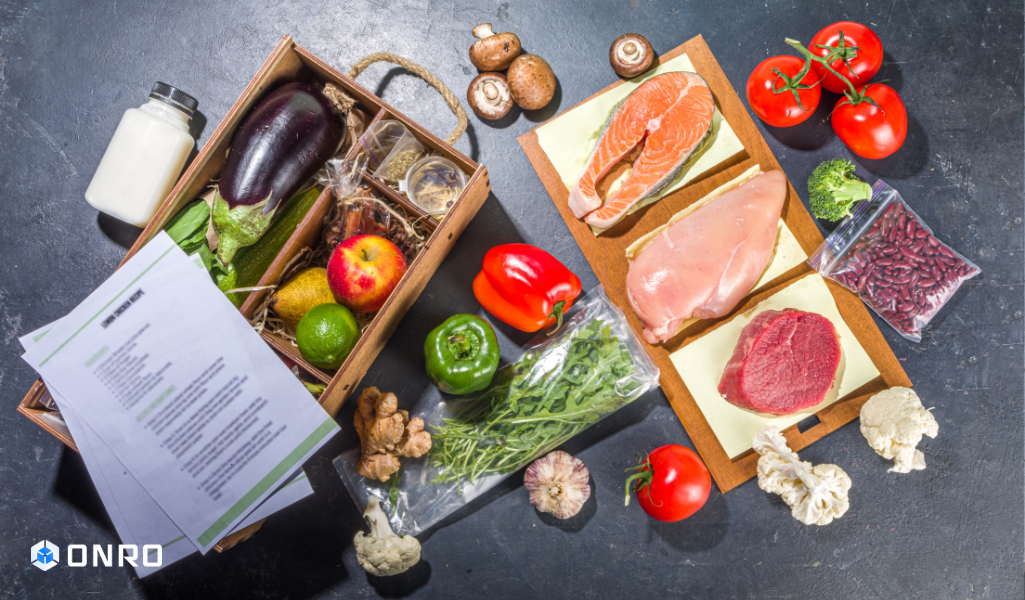In this article, we tell you how to start a delivery business, and what is required for it. The past pandemic and the sharp increase in the number of online stores have led to a high demand for delivery services. More and more entrepreneurs are thinking about opening such a business. Don’t forget to investigate our solution for starting a delivery business.
Try Onro for Free
Get your free access to the Onro All-in-one Delivery Management Software.
1. Choosing the right niche
To answer the question of how to start a delivery business, choosing the right niche helps you win the competition. Initially, it is better to work in a narrow segment.
First of all, you should consider:
Business area
It is important to choose a delivery area. At first, it is impossible to cover the entire city. It is better to locate the office in the center of densely populated areas and limit it to a small area. As income, number of employees, and machines grow, the scope of activity can be expanded.
Specifics of the goods delivered
It depends on whether you need to rent a warehouse, buy special equipment, or hire employees. At the beginning, you can concentrate on delivering one thing: correspondence, small and large cargo, flowers, gifts, books, or balloons.
Delivery method
It determines the size of the investment. At first, you can limit yourself to foot couriers. Purchasing a car will greatly expand business opportunities.
Delivery type
In addition to standard, it can be on-demand, same-day, or next-day. Payments will vary depending on the conditions. To determine your delivery type, don’t forget to visit our article about types of courier services.
To choose a niche, you need to evaluate the market for delivery services in the city. You can also investigate the partnership programs like Amazon DSP Program: which of them are most in demand and what is missing. The better you learn it, the faster your business will start working.
2. Creating a business plan to start a delivery service
You can draw up a business plan yourself or order it from specialists. The latter option is preferable, since preparing a competent business plan requires collecting and analyzing a large amount of data.
To draw up a business plan yourself, experts advise sticking to a clear structure. Typically, the document consists of the following sections:
- A brief description of the project
- Market and competitor analysis
- Production plan
- Organizational plan
- Marketing plan
- Financial plan
- Calculation of payback and profitability
- Risk assessment
The business plan must consistently describe what the chosen business is, who its potential clients are, and how it is planned to implement the plan. Calculate costs and forecast financial performance.
To draw up a business plan, you need to clearly understand your target audience. Most often, the delivery service works with legal entities:
- Online stores
- Cafes and restaurants
- Grocery hypermarkets
Companies pay for delivery services and interact with customers independently.
Usually, the delivery process is carried out according to the following algorithm:
- The manager of the customer company accepts requests from clients for delivery.
- He/She writes down the details: address, courier pick-up time, and agreed amount. The order is then transferred to the delivery service.
- The courier delivers the purchase at the appointed time and place and accepts payment from the client.
- The courier informs the company manager that the cargo has been delivered to the client. If a company performs services for a third party, it notifies the customer of the delivery.
- At the end of the day, the courier hands over the proceeds to the company manager.
If the client paid for the order on the website, the courier must ask him to sign upon receipt of the parcel.
3. Choosing the right route for starting a delivery service
Logistics involves choosing the right route, method of delivering products to the client, and checking the cargo. All this is designed to minimize losses and increase profits.
Beginner entrepreneurs can cope with the tasks on their own while the number of orders is small. As the company’s income and capabilities grow, experts recommend purchasing special software to automate processes and reduce the number of errors. Over time, you can hire a logistician on staff.
Main areas of logistics:
Transport management
Logisticians decide which type of transport is best to use for each order, select cars, monitor delivery, monitor the technical condition of vehicles, and monitor their timely maintenance.
Communication
Timely processing of orders and transferring them to couriers. The logistician connects those who take orders with those who perform delivery tasks. Therefore, the main thing for him is to ensure that orders are processed quickly and drivers receive information about deliveries on time.
Preparation of documents
The logistician must take part in concluding agreements for the constant delivery of, for example, lunches to offices. He must also assess to what extent the company will be able to fulfill the agreement, taking into account the availability of equipment and other capabilities.
Warehouse management
When delivering large cargo, the responsibilities of a logistician include managing all processes in the warehouse: acceptance, sorting, packaging, and shipping.
Working on the quality of service
As the number of orders grows, it is better to implement a CRM system in the company. The program helps automate business processes, reduce routine work, and ensure timely and competent communication with clients. Processing orders will become easier.
4. Creating a delivery process
Setting up a delivery business means creating a path to fulfill customer orders, correctly load them onto delivery vehicles, and deliver them to the customer. The delivery process can be divided into three parts:
Create an optimal path
As you receive customer orders, you must create a route for your drivers. While you can try to plan the route manually, it won’t be efficient because you won’t be aware of the best possible routes. Also, as your business scales, manual route planning becomes complicated and error-prone.
Onro is an awesome solution to optimize your routes and has powerful features to streamline your delivery operations!
Delivery tracking
When your drivers are on the road, you need to view the shipments. First, you should provide the correct ETA to customers. Then you should be able to share travel details with customers so that they are updated about their delivery. After that, ensure drivers stay on track and avoid unnecessary detours. Finally, you can add additional stops to the route if needed.
Complete delivery
As the driver arrives at the customer’s address, you want to ensure a successful delivery. The driver must refer to any special delivery notes provided by the customer, such as “Do not ring” or “Keep the package at the door.”
It is also necessary to register the delivery certificate. The driver must complete the delivery by taking the customer’s digital signature or by clicking on the photo of the package as proof of delivery. Doing so will help manage customer complaints later on about failed or damaged deliveries.
5. Marketing your delivery business
The power of social media influences building an online presence. You should try email marketing to stay in touch with your customers and send them awesome offers. Don’t forget to read our blog post about courier advertising ideas.
Important points about starting your own delivery service
In recent years, the demand for delivery services has increased significantly, and there are more customers. At the same time, the number of companies specializing in delivery has increased.
According to the research, over the past 2 years, the number of establishments that offer to deliver products to your home has increased 1.5 times, and every fourth order from restaurants was for food delivery.
Due to the large number of competitors in this business, entrepreneurs have to fight for clients and pursue an active policy to attract them.
- Offer new services
- Discounts
- Stock
- Expand the delivery area
In addition to high competition, the disadvantage of activity is dependence on weather conditions, transport accessibility, and equipment breakdowns.
At the same time, providing delivery services has a number of advantages, including:
- Investments are small
- No special knowledge is required
- There is no need to purchase expensive equipment or train employees
- There is always demand
The pros and cons of starting your own delivery business
Let’s start with the biggest disadvantage of all delivery services and aggregators: a huge commission percentage on each order, from 25% and above, plus the cost of the delivery service itself for the client, regardless of the order amount. Yes, there are services that temporarily launch “free” delivery, but the costs of this promotion fall on the shoulders of product owners.
But there is also a clear advantage to aggregators: this is a minimal investment to start delivery; you just need to purchase packaging and take high-quality photos of your product to start selling online. In addition, this is a good option for promoting delivery services in general.
Conclusion
You can start a delivery business with a structured approach and the right resources at your disposal. It is wise to use tools and software such as Onro, which will make your life easier. With the growing demand for delivery, starting a delivery business is a big step forward!
Try Onro for Free
Get your free access to the Onro All-in-one Delivery Management Software.



